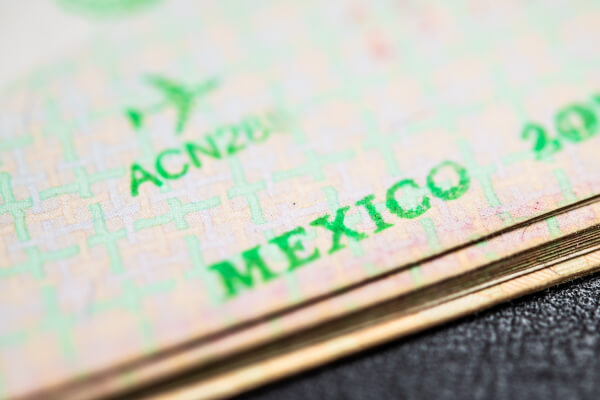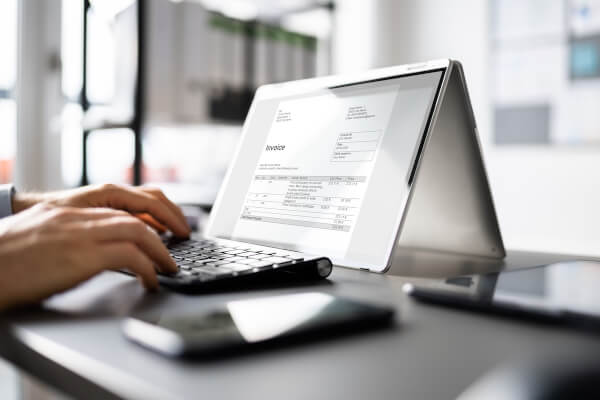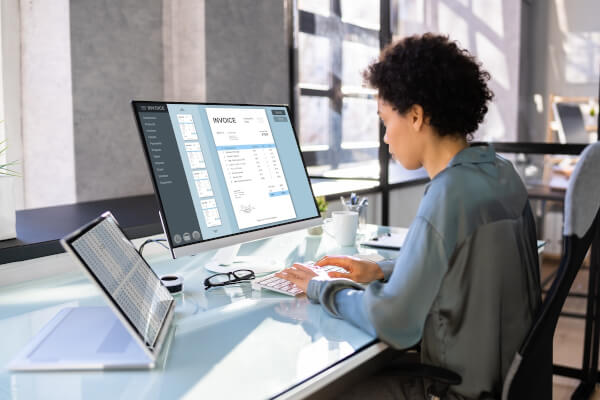How to Hire Independent Contractors in Mexico | Legal Guide & Best Practices
Learn how to hire and pay independent contractors in Mexico. This article also includes an FAQ and best practices about working with contractors in Mexico.

With over 99%¹ of coffee in the U.S. being imported, understanding how the import process works is essential for anyone looking to enter this $100+ billion industry¹. Whether you're launching a coffee brand or expanding your supply chain, this guide will show you everything you need to know to successfully import coffee beans into the US.
Save money on import costs
with Wise Business
Importing coffee into the US involves strict compliance with multiple government agencies, each responsible for making sure your shipment is safe and legal.
To start, any domestic or international facility handling food products must be registered with the Food and Drug Administration (FDA). Because coffee is a plant-based product, it also falls under the Department of Agriculture’s (USDA) jurisdiction. Depending on the origin and processing method, you may need to secure a USDA import permit.
If your shipment is large enough, US Customs and Border Protection (CBP) requires a customs bond to ensure duties and regulations are handled properly. And there’s more: under the Foreign Supplier Verification Program (FSVP), importers must verify their suppliers meet U.S. food safety standards. This is a key part of trade compliance. Make sure that you are up to date on the relevant legislation, as it can change frequently.
Start by looking for partners with proven export experience and a track record of reliability in international trade. Make sure they comply with quality standards and can meet all US. regulatory requirements, including proper documentation and certifications.
Today’s coffee lovers care about more than just taste. Sustainability and ethical sourcing matter, too. So if you’re planning to import coffee to the USA, working with suppliers who offer traceability, fair trade practices, or organic certifications can boost your brand’s credibility.
Build trust from the start with a solid verification process. That might mean sampling, site visits, or relying on third-party certifications. These are key steps in shaping responsible coffee importing strategies and staying on top of trade compliance.
While whole coffee beans are generally duty-free under HS code 0901², importers still need to meet several important documentation and compliance requirements. You’ll need to submit commercial invoices, bills of lading, and certificates of origin to the U.S. Customs. Each bag must be clearly labeled with its country of origin, as required by regulations.
In addition, an Importer Security Filing (ISF) must be submitted before the shipment departs from the foreign port. This allows U.S. authorities to review cargo data in advance for security purposes.²
Depending on the country of origin and shipping method, some imports may also require an International Coffee Organization (ICO) Certificate of Origin to verify the product’s legitimacy.
When importing coffee, the method of transportation depends on your volume, budget, and urgency.
Ocean freight is the most common way to move coffee in bulk. It’s cost-effective and flexible, with different load options depending on how much you’re shipping. If you’re looking at the bigger picture of coffee trade or long-haul coffee importing strategies, it’s a smart choice. For premium beans or time-sensitive orders, air freight is faster, but pricier. Specialty roasters often choose this method for smaller, high-value shipments where timing matters.
Once your coffee arrives at a US port, ground freight handles domestic distribution, moving the beans to warehouses, roasteries, or retail locations. Typically, beans are processed, graded, and packed at origin, ensuring they’re export-ready before shipping.
Once in the US, they’re stored in climate-controlled warehouses until they’re ready for roasting or final distribution.
Proper storage and transport conditions are critical, especially during long ocean freight journeys. Beans should be kept in clean, dry, well-ventilated containers to preserve freshness and avoid mold or pests. For anyone navigating the coffee trade, this isn’t optional—it’s essential.
Use FDA-compliant packaging that’s food-safe and clearly labeled to meet US coffee regulations. It’s a small but vital step in staying on top of trade compliance when you import coffee to the USA.
Before distribution, conduct quality verification tests such as cupping for flavor profile, moisture content checks, and label accuracy reviews to ensure the beans meet your standards and customer expectations. Finally, implement risk-based controls as required under the FDA’s Food Safety Modernization Act (FSMA) to ensure food safety and traceability throughout your supply chain.³
In international trade, trust and communication are everything. Setting clear expectations around quality standards, delivery timelines, and responsibilities helps avoid misunderstandings and keeps operations running smoothly.
Regularly evaluating supplier performance ensures consistency and allows you to catch issues early. But even with great communication, payments can be a common friction point, unless you have the right tools.
|
|---|
One big benefit of coffee importing strategies is cutting sourcing costs. By working directly with coffee-producing regions, where production expenses are lower, importers can improve margins without sacrificing quality.
There’s also strength in numbers. Buying in bulk gives you more negotiating power and greater control over your supply chain, key for anyone serious about coffee business success.
And with access to beans from over 30 coffee-growing countries, you can offer a wide range of flavors, profiles, and processing styles, ideal for customers with diverse tastes in the global coffee trade.
Brazil remains the top supplier, accounting for $1.33 billion in imports in 2023.⁵ Its dominance is driven by both volume and variety, including a strong mix of arabica and robusta beans.⁶
Colombia holds second place and is celebrated for its high-quality arabica coffee, known for smooth, balanced flavors that are popular with US consumers and specialty roasters alike.⁵⁶
Switzerland plays a significant role as a processing and re-export hub, especially for decaffeinated and value-added coffee products.⁵
Vietnam is a major source of robusta coffee, favored for its strong flavor and use in espresso blends and instant coffee products.
Honduras, Peru, and Guatemala continue to grow their share of the US market, offering diverse flavor profiles and increasingly strong positions in the specialty and ethically sourced coffee segments.
Managing cross-border payments doesn’t have to be complicated. Wise Business simplifies international finance for coffee importers, helping you save time, reduce costs, and keep operations running smoothly.
Wise is not a bank, but a Money Services Business (MSB) provider and a smart alternative to banks. With no monthly fees, you only pay for what you use, perfect for businesses managing tight margins. Payments are made at the mid-market exchange rate, so there are no hidden fees or unfair markups.
| Read the guide on how to open a Wise Business account |
|---|
You can hold and manage over 40 currencies in one account, and receive payments like a local with account details in 9 major currencies. This makes it easier to work with suppliers across borders without expensive bank delays.
Open a Wise Business account online
Wise Business also connects directly to Xero and QuickBooks, streamlining your bookkeeping. By using Wise Business, coffee importers can cut payment friction, strengthen supplier relationships, and stay focused on growing their brand in a competitive global market.
Sources:
¹Coffee and Trade
²Flexport Help Center Article | How to Import Coffee into the United States
³FSMA Final Rule on Foreign Supplier Verification Programs (FSVP) for Importers of Food for Humans and Animals | FDA
⁵Coffee in United States Trade | The Observatory of Economic Complexity
⁶U.S. demand for coffee stimulates imports from Latin America | Economic Research Service
All sources checked April 2025
*Please see terms of use and product availability for your region or visit Wise fees and pricing for the most up to date pricing and fee information.
This publication is provided for general information purposes and does not constitute legal, tax or other professional advice from Wise Payments Limited or its subsidiaries and its affiliates, and it is not intended as a substitute for obtaining advice from a financial advisor or any other professional.
We make no representations, warranties or guarantees, whether expressed or implied, that the content in the publication is accurate, complete or up to date.

Learn how to hire and pay independent contractors in Mexico. This article also includes an FAQ and best practices about working with contractors in Mexico.

Learn how to navigate the overseas worker recruitment. Discover legal requirements, sourcing strategies, visa compliance, and tips for international hiring.

Paying overseas vendors is common, but the hidden costs of B2B cross-border payments aren’t. Learn how to simplify international business payments today.

B2B payment processing doesn’t have to be hard. Learn how growing businesses can simplify cross-border transactions, streamline invoicing and get paid faster.

Discover strategies to enhance B2B payment security, reduce fraud risk, and protect cash flow using secure digital payment methods and automated workflows.

B2B payment automation helps small businesses save time and reduce costs. Read about how automation replaces manual tasks and boosts accuracy and cash flow.